Y Filltir Sgwâr/The Square Mile: A folly, a grotto and the American gardens in between
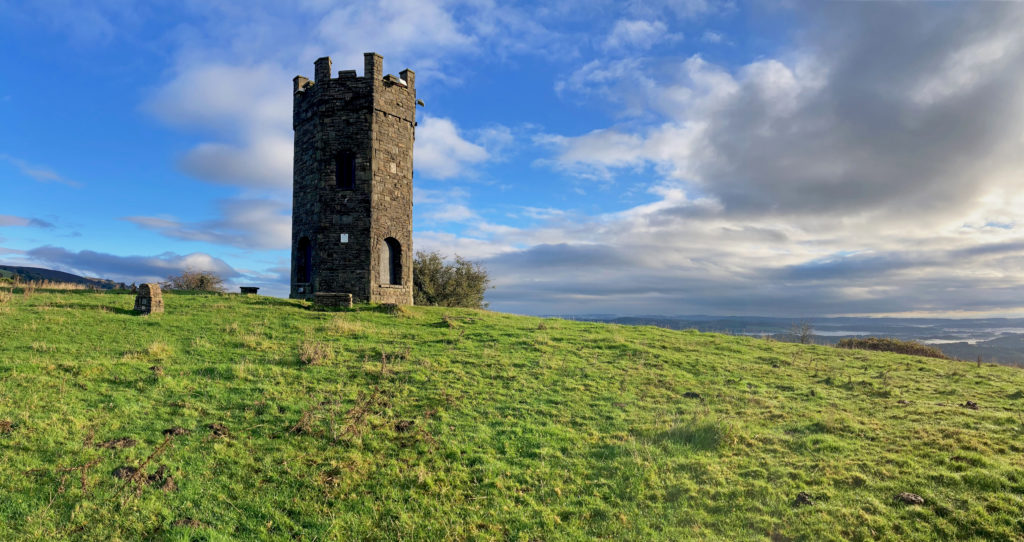
Photo: Tom Maloney
I am conscious that each of my little articles in this series is just a snapshot really, but hopefully taken as a whole they give a broader picture of a landscape that has seen so much history and change, but which still retains so much of its innate beauty.
My walks will often take me to places where heavy industry has had its day and where perhaps you would hardly think that there had been any industry at all.
The Lasgarn Woodland is one such place. An interpretation board at an entrance to the wood at The Rising Sun Bridge tells a little of its past.
‘You will find a number of limestone quarries scattered about the wood, mostly overgrown now and not easily found.
Limestone was taken from these quarries to feed the ironworks at Pontypool, owned by the Hanbury family.’
Around the locality there are numerous reminders of the Hanbury legacy on road signs, but who were they?
‘Coflein’, The online catalogue of archaeology, buildings, industrial and maritime heritage in Wales, gives a good description of the family in its listing about Pontypool Park House.
‘Pontypool House was once the home of the Hanbury family who were benefactors in the development of the town of Pontypool. They were important ironmasters in the area of Pontypool from the sixteenth century onwards when they acquired the lease of the Pontypool Ironworks.’
And … just above the Lasgarn Wood, the snaking ridgeway that stretches from Blaenavon to Pontypool will lead you to Pontypool Park, where it is still possible to catch a glimpse of their past lives.
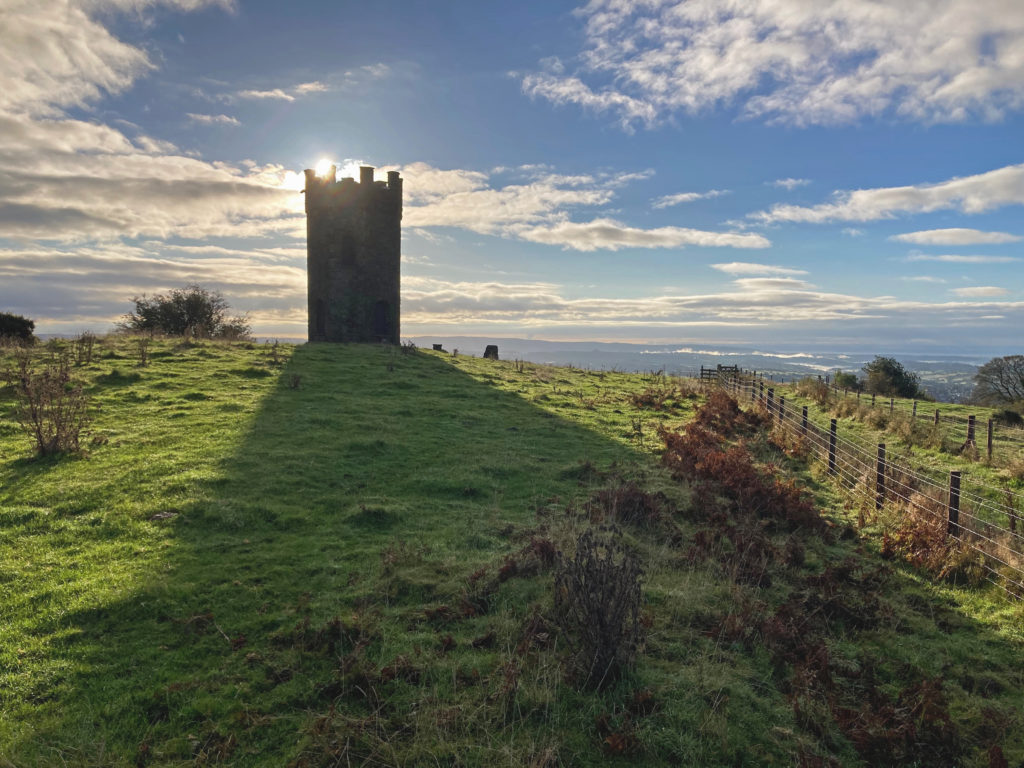
At the top of the park sits the unmistakable Folly Tower. It is such an iconic feature of the skyline and visible from many points locally, though it has literally had a chequered history of ups and downs!
As a young child I remember walking to the folly and being more than a little disappointed, because I had been expecting to see a very tall tower, but all I saw was a tumble of stones strewn along the hillside.
The view that I saw then was the legacy of the second world war. The story that I grew up with was that it was taken down because the structure could have been used by German bombers as a navigational aid to target the nearby munitions factory. I think that this is still the generally understood explanation today.
A definition given by the Oxford Reference describes a folly as:
‘A costly ornamental building with no practical purpose, especially a tower or mock-Gothic ruin built in a large garden or park.’
Far from having no practical purpose, how could the deadly purpose of being an aid to bombing from airborne machines have been foreseen by the Hanbury family when the structure was built on the site of a summer house just over one hundred years before* and how sad it is that such a tragic purpose remains a part of life around the world.
The building as it stands today is very much a building of the people. Restoration came about because of a community project in the 1990s and was officially opened by King Charles, whilst he was Prince of Wales, in 1994*.
Morning light is just lovely here. Standing within the long shadow cast by the sun as it sparkles through the castellations makes an early start so worthwhile and does wonders for your well-being.

A short hop and a skip down a country lane between emerald green fields where cattle and sheep graze freely you arrive at ‘The Grotto’. Mostly, you will encounter gates along the way, but there is an odd stile to negotiate from time to time as well.
The interpretation board by the side of this quaint, little building gives so much understanding about the inspiration behind the design of this landscape in just a couple of sentences:
‘The Shell Grotto was originally constructed around 1794, although many improvements were made by Molly, the wife of Caple Hanbury-Leigh about 1830.
Molly is credited with the interior design and is known to have subscribed to the publication ‘Follies and Grottoes’.’
It would be fair to say that the family were ‘dedicated followers of fashion’ of the romantic, picturesque style that was so popular in the eighteenth and nineteenth centuries with those who had the means to own large estates.
I have been lucky enough to go inside the ‘shell grotto’ on several occasions and although I know what to expect, I am nevertheless, amazed and surprised every time.
The space you walk into is not a room, but a different world where Tolkien would I dare say have been at home. It is a world of fairies or maybe even goblins, depending on your point of view, elaborately decorated with iridescent shells that gleam and shimmer even in low light. There are fossils and bones wherever you cast your eye and even under foot.
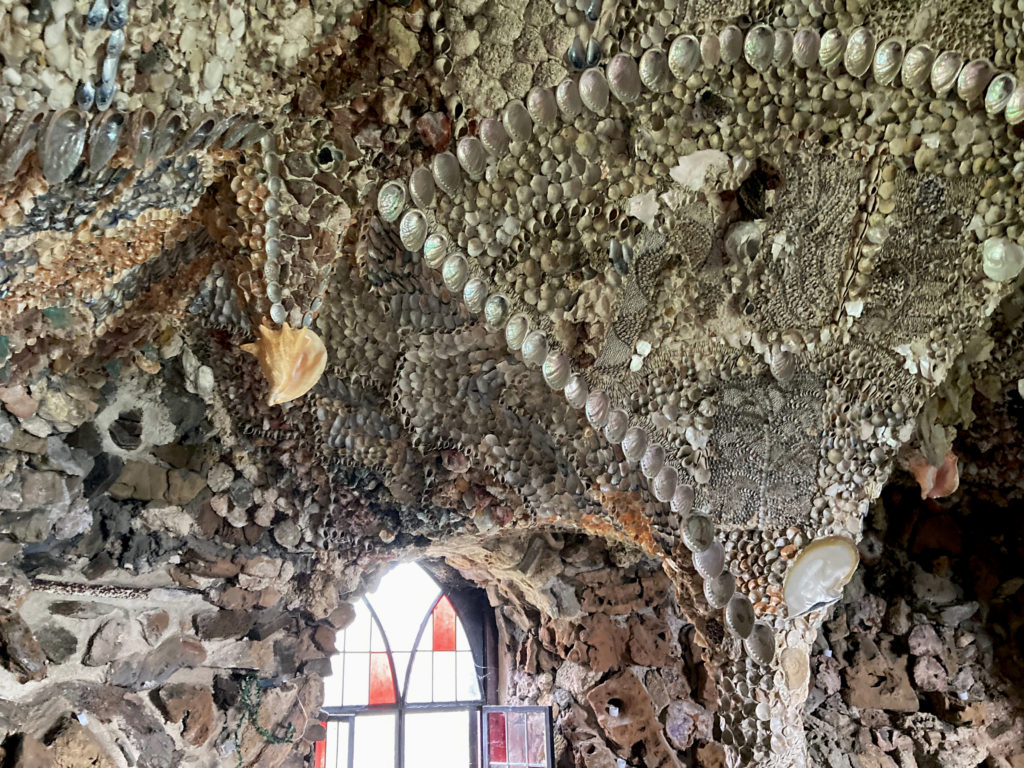
A real treat for me is a little visit to the American Gardens. Most people locally will be aware of Pontypool Park, but I rather think that the American Gardens is still something of a forgotten place within its boundaries.
It is only a stone’s throw away, perhaps five to ten minutes’ walk, following a short farm track between the Folly and The Grotto.
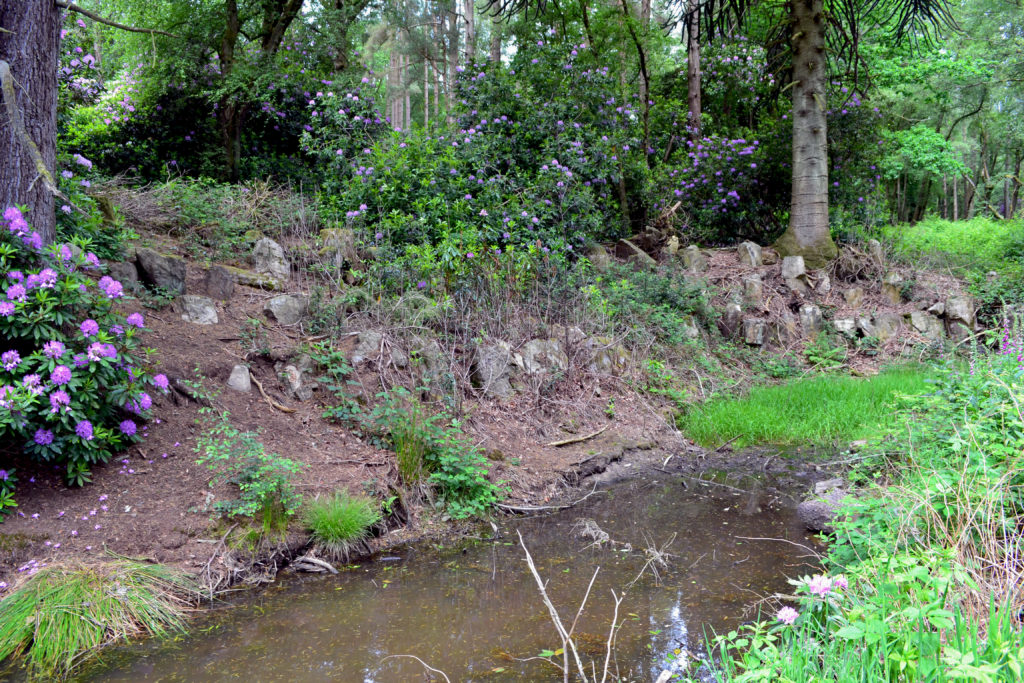
Over the past few years, a great deal has been done to restore the gardens to their original glory and the transformation achieved by the American Gardens Environmental Project has been incredible.
I took a few photographs in June 2017 not knowing that a restoration project was about to begin. The next visit was a real wow moment, and the wow moments just continue.
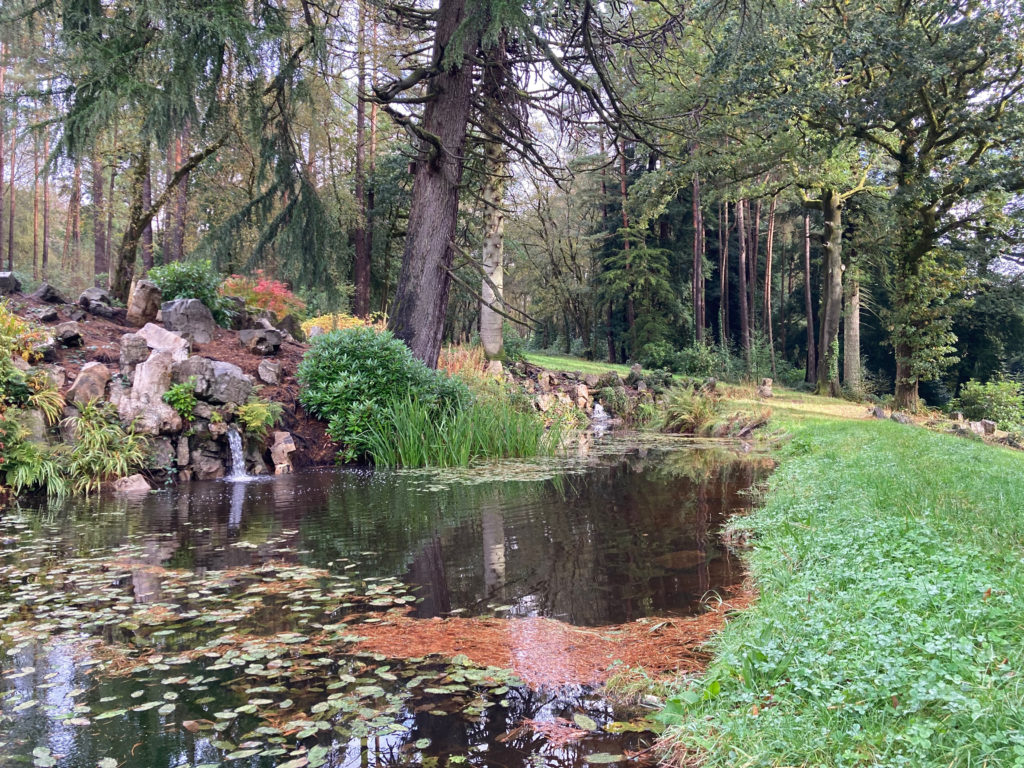
During my walks this week I have had a sense that Molly’s creative mind may have been at work here too. The gentle, trickling flow of water into rock pools surrounded by specimen trees like the Californian Redwoods have an imaginative, romantic echo in their design.
According to the history available on the American Gardens Environmental Project work began on the gardens in 1841, when Molly was still alive, but it would be a mistake to think that this was just the indulgence of a rich person’s pocket.
‘… work on the Gardens began in 1841, during a time of local depression. When confronted with the need to lay off workers from his ironworks, Capel Hanbury Leigh provided alternative employment through his garden project, extending the pleasure grounds associated with Pontypool House.’
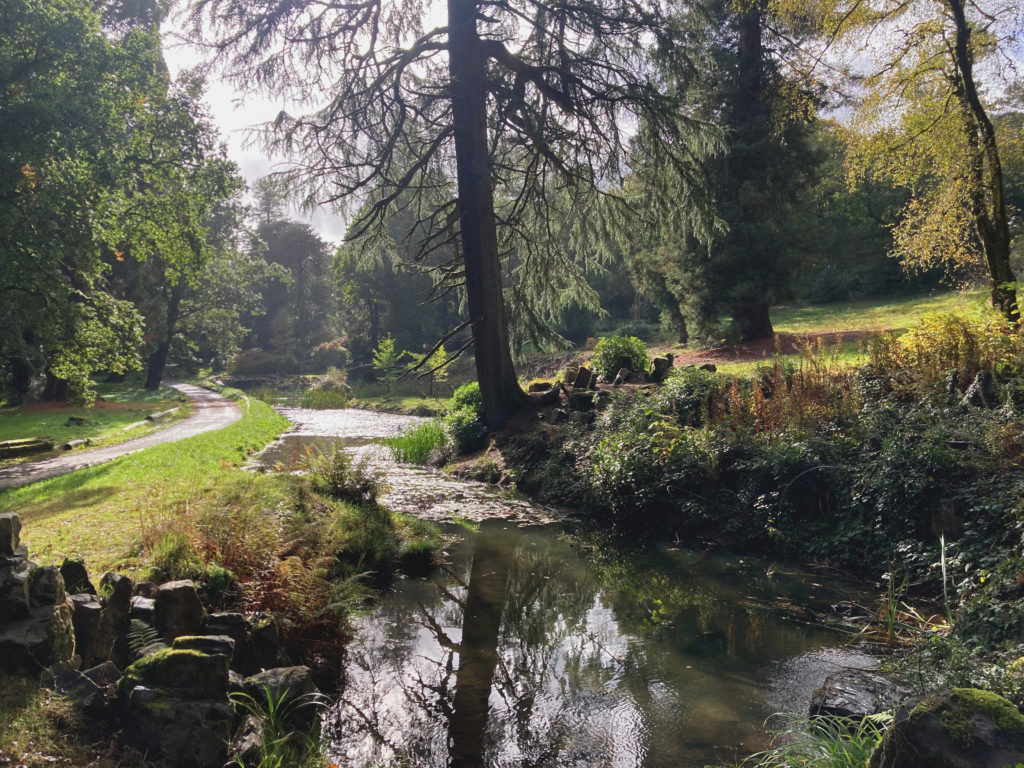
I am not sure whether the future plans for the gardens include an interpretation board, but this is a site where the visitor’s experience could be greatly enhanced by having a well-designed, discreetly placed information panel.
There is so much to take in when walking here. This is a landscape quite probably fashioned for the enjoyment of a few, but the legacy is much, much bigger than first envisaged, where everyone can now freely enjoy the fruits of the past.
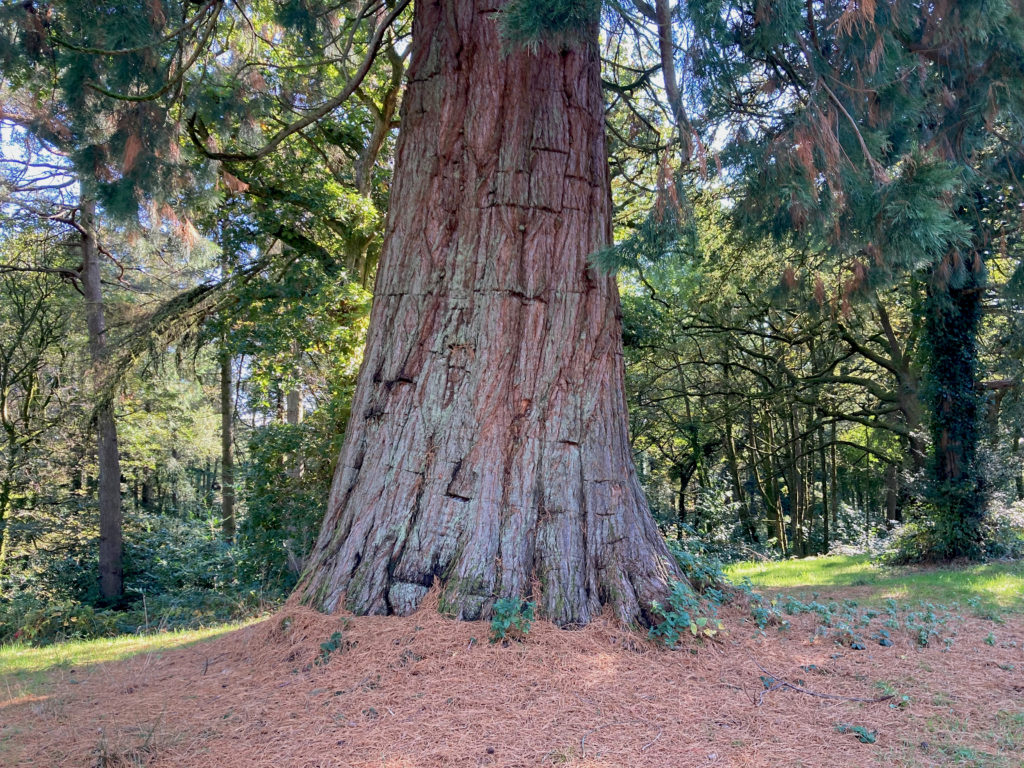
Standing underneath the drooping branches of a Giant Sequoia tree is a full sensory experience. Walking on the carpet of orange needles that surround the base of the huge trunk releases such a lovely woodland scent and you cannot help but feel the bark, which looks like textured leather, but feels so spongy. And the cones… well they are so much smaller than I would have expected of these giant trees! I have never been to California and to have this joy on your doorstep is absolutely amazing.
Visiting information
‘The Friends of Pontypool Park’ regularly open the Folly and The Grotto on Bank Holidays and invite Santa to drop in at the Grotto at Christmas.
There is ample parking at the Pontypool Active Living Centre
Support our Nation today
For the price of a cup of coffee a month you can help us create an independent, not-for-profit, national news service for the people of Wales, by the people of Wales.




